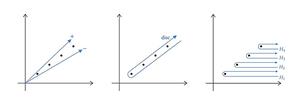The potential of PD-L2 inhibitors for cancer treatment
![]() An international team of scientists have elucidated how cancer cells that have become senescent following chemotherapy activate the PD-L2 protein to protect themselves from the immune system while recruiting immune suppressor cells. Cancer treatments, including chemotherapy, kill many tumour cells but cause the production of senescent tumour cells. While these cells do not reproduce, they generate a favourable environment for the expansion of tumour cells that may have escaped the chemotherapy effects. This eventually results in tumour regrowth. Immune suppressor cells create an inhibitory environment that impairs the ability of lymphocytes to kill cancer cells. Based on these findings, the team, led by Dr Manuel Serrano at IRB Barcelona, investigated the effect of inactivating PD-L2. They used cell lines and animal models of melanoma, pancreatic and breast cancer for the study. Notably, senescent cells lacking PD-L2 are quickly eliminated by the immune system. This intercepts the capacity of senescent cells to create an immunosuppressive environment. Therefore, lymphocytes retain their full capacity to kill those cancer cells that may have escaped the effects of chemotherapy. Dr Serrano, who is currently working at Altos Labs, explained: "By blocking PD-L2 in mouse models, we have seen that chemotherapy is more effective against cancer. This finding paves the way to consider the use of a potential PD-L2 inhibitor as an adjuvant in the treatment of this disease." The process of cellular senescence occurs naturally during ageing and is common in cancer therapies, like chemotherapy and radiotherapy, which act by causing extensive cellular damage. This brings about senescent cells, particularly within the tumour. Moving forward, the team of scientists will study whether senescent cells linked to the ageing of the organism also exhibit elevated levels of PD-L2. Dr José Alberto López-Domínguez concluded: "Although more experiments are needed to characterise the role of this molecule in different types of human cancers, this work has enhanced our understanding of the role of PD-L2 and the interaction of senescent cells with the immune system."
An international team of scientists have elucidated how cancer cells that have become senescent following chemotherapy activate the PD-L2 protein to protect themselves from the immune system while recruiting immune suppressor cells. Cancer treatments, including chemotherapy, kill many tumour cells but cause the production of senescent tumour cells. While these cells do not reproduce, they generate a favourable environment for the expansion of tumour cells that may have escaped the chemotherapy effects. This eventually results in tumour regrowth. Immune suppressor cells create an inhibitory environment that impairs the ability of lymphocytes to kill cancer cells. Based on these findings, the team, led by Dr Manuel Serrano at IRB Barcelona, investigated the effect of inactivating PD-L2. They used cell lines and animal models of melanoma, pancreatic and breast cancer for the study. Notably, senescent cells lacking PD-L2 are quickly eliminated by the immune system. This intercepts the capacity of senescent cells to create an immunosuppressive environment. Therefore, lymphocytes retain their full capacity to kill those cancer cells that may have escaped the effects of chemotherapy. Dr Serrano, who is currently working at Altos Labs, explained: "By blocking PD-L2 in mouse models, we have seen that chemotherapy is more effective against cancer. This finding paves the way to consider the use of a potential PD-L2 inhibitor as an adjuvant in the treatment of this disease." The process of cellular senescence occurs naturally during ageing and is common in cancer therapies, like chemotherapy and radiotherapy, which act by causing extensive cellular damage. This brings about senescent cells, particularly within the tumour. Moving forward, the team of scientists will study whether senescent cells linked to the ageing of the organism also exhibit elevated levels of PD-L2. Dr José Alberto López-Domínguez concluded: "Although more experiments are needed to characterise the role of this molecule in different types of human cancers, this work has enhanced our understanding of the role of PD-L2 and the interaction of senescent cells with the immune system."

 An international team of scientists have elucidated how cancer cells that have become senescent following chemotherapy activate the PD-L2 protein to protect themselves from the immune system while recruiting immune suppressor cells. Cancer treatments, including chemotherapy, kill many tumour cells but cause the production of senescent tumour cells. While these cells do not reproduce, they generate a favourable environment for the expansion of tumour cells that may have escaped the chemotherapy effects. This eventually results in tumour regrowth. Immune suppressor cells create an inhibitory environment that impairs the ability of lymphocytes to kill cancer cells. Based on these findings, the team, led by Dr Manuel Serrano at IRB Barcelona, investigated the effect of inactivating PD-L2. They used cell lines and animal models of melanoma, pancreatic and breast cancer for the study. Notably, senescent cells lacking PD-L2 are quickly eliminated by the immune system. This intercepts the capacity of senescent cells to create an immunosuppressive environment. Therefore, lymphocytes retain their full capacity to kill those cancer cells that may have escaped the effects of chemotherapy. Dr Serrano, who is currently working at Altos Labs, explained: "By blocking PD-L2 in mouse models, we have seen that chemotherapy is more effective against cancer. This finding paves the way to consider the use of a potential PD-L2 inhibitor as an adjuvant in the treatment of this disease." The process of cellular senescence occurs naturally during ageing and is common in cancer therapies, like chemotherapy and radiotherapy, which act by causing extensive cellular damage. This brings about senescent cells, particularly within the tumour. Moving forward, the team of scientists will study whether senescent cells linked to the ageing of the organism also exhibit elevated levels of PD-L2. Dr José Alberto López-Domínguez concluded: "Although more experiments are needed to characterise the role of this molecule in different types of human cancers, this work has enhanced our understanding of the role of PD-L2 and the interaction of senescent cells with the immune system."
An international team of scientists have elucidated how cancer cells that have become senescent following chemotherapy activate the PD-L2 protein to protect themselves from the immune system while recruiting immune suppressor cells. Cancer treatments, including chemotherapy, kill many tumour cells but cause the production of senescent tumour cells. While these cells do not reproduce, they generate a favourable environment for the expansion of tumour cells that may have escaped the chemotherapy effects. This eventually results in tumour regrowth. Immune suppressor cells create an inhibitory environment that impairs the ability of lymphocytes to kill cancer cells. Based on these findings, the team, led by Dr Manuel Serrano at IRB Barcelona, investigated the effect of inactivating PD-L2. They used cell lines and animal models of melanoma, pancreatic and breast cancer for the study. Notably, senescent cells lacking PD-L2 are quickly eliminated by the immune system. This intercepts the capacity of senescent cells to create an immunosuppressive environment. Therefore, lymphocytes retain their full capacity to kill those cancer cells that may have escaped the effects of chemotherapy. Dr Serrano, who is currently working at Altos Labs, explained: "By blocking PD-L2 in mouse models, we have seen that chemotherapy is more effective against cancer. This finding paves the way to consider the use of a potential PD-L2 inhibitor as an adjuvant in the treatment of this disease." The process of cellular senescence occurs naturally during ageing and is common in cancer therapies, like chemotherapy and radiotherapy, which act by causing extensive cellular damage. This brings about senescent cells, particularly within the tumour. Moving forward, the team of scientists will study whether senescent cells linked to the ageing of the organism also exhibit elevated levels of PD-L2. Dr José Alberto López-Domínguez concluded: "Although more experiments are needed to characterise the role of this molecule in different types of human cancers, this work has enhanced our understanding of the role of PD-L2 and the interaction of senescent cells with the immune system."







